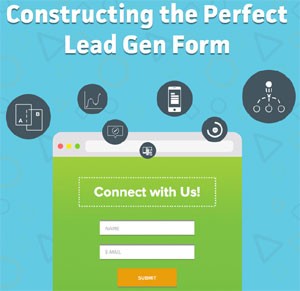
In the world of websites, 508 Compliance is being brought up more and more often. Being 508 compliant must be a new thing, right? A new law must have passed that is spurring on this push? Actually, the beginnings of this law stem all the way back to Section 508 of the Rehabilitation Act of 1973. Of course, it wasn’t the same regulations then that it is today, but over time through amendments and revisions has evolved into the 508 Compliance that we are talking about now.
What is 508 Compliance?
Okay. It’s been around a while, but what is 508 Compliance anyway? Why should I become 508 Compliant?
The answer is simple. 508 Compliance is a requirement for websites and other technologies to be accessible for people with disabilities. It’s in place to help give guidelines to organizations that both want and need to be accessible. There are a wide variety of disabilities that need to be accounted for. These standards help in accessibility for people with, but not limited to these disabilities:
- Visual disabilities (e.g., blindness, low vision and lack of color perception)
- Hearing disabilities (e.g., hard of hearing, deafness)
- People with physical disabilities (e.g., limited strength, reach or manipulation, tremor, lack of sensation)
- People with speech disabilities
- People with language, learning or cognitive disabilities (e.g., reading disabilities, thinking, remembering, sequencing disabilities)
- Other disabilities (e.g., epilepsy, short stature), and
- Individuals with any combination of these disabling conditions (e.g., deaf-blindness).
*** bullets taken from here. ***
Do I have to comply?
Federal government websites and other technology, higher learning organizations, and government contractors need to comply. However, according to the CDC 1 in 4 Americans have a disability of some sort. With that said, if you aren’t providing a website that has the ability to be accessed by people with disabilities, you’re losing visitors from your site! They’re heading over to a competitor’s website where they can access the information. Also, as a business, you could compare this to providing a wheelchair ramp into your brick and mortar store. If a store did not provide a way for it to be accessible, it’s very possible that a lawsuit would ensue. They are providing a product or service to the public, but are excluding a population from entering. This is the same for websites, apps, and other technologies. If you’re providing a product or service, but barring a certain population from accessing, it’s possible you could see a lawsuit ensue. Just ask Dominos Pizza.
I want to be compliant. Where do I begin?
Honestly, becoming 508 compliant isn’t a completely obvious thing in some cases. If you haven’t looked through the eyes of someone that is color blind, you may not fully understand how important color contrast is. Here’s an awesome tool that can help you see what websites look like for a colorblind person. If you aren’t blind, you may not fully understand how hard it is to navigate through the internet using a page reader. Download this screen reader and close your eyes. Then see if you can navigate through a website that you regularly navigate. It’s confusing and hard to understand even on sites you are visually used to.
Having some understanding of what to look for in creating/updating a website that is 508 compliant is key. Then once you have a basic understanding, there are lots of great tools that you can use to figure out what fixes you need to make.
508 compliance starts at the very beginning of web design.
Picking the right colors is a huge part of being compliant. When building a website you want to stick to a few, consistent colors because it’s important for the flow and consistency of the site. When you are picking them, make sure you choose high contrast colors. Think of your buttons or any place where you have a background color with text over the top. Even if you think that the color contrast is okay, run it through a test here to make sure. That test will even tell you what WCAG level your colors reach. If the contrast is too low, someone that is colorblind will have a lot of trouble accessing your site.
Another huge piece of being 508 compliant is making sure your non-decorative images have “alt tags” or alternative text. I mention non-decorative because you don’t need to put any alternative text on images that are simply there as decoration. If the image adds something to the page other than aesthetics, add alt text. Within the alt text, make sure you are describing the picture itself. Remember, you are describing the picture to someone that can’t see, so be as descriptive as you can. The things that you can see visually need to be described through the use of a screen reader. Also, don’t use the words “Picture” or “Image” in the alt text. The screen reader will already tell the user that. It would be annoying to always hear “Picture” “Picture of a man reading a book”. I know I’d hear that a couple of times, and leave the site because that repetition would drive me crazy after a little bit.

There are many other areas where a website can be made 508 compliant. It’s going to take a lot of trial and error in getting it perfected, but luckily there are tools that can help you make a 508 compliant website.
Tools that you can use to identify items that aren’t 508 compliant.
I’ve mentioned a few in this article already, but there are quite a few other tools that can help you identify where your website is not meeting standards and where it can be improved to make it more accessible to users. You can find a huge list of accessibility tools on this website. There are also companies like Ironistic that can help your organization to create, update, or repair your site so it meets 508 compliance standards.
I’ve started the process, how do I know when I’m 508 compliant?
An important distinction in becoming 508 compliant is that an organization, in most cases, is in compliance simply by making an effort towards becoming compliant. It isn’t an all or nothing thing. With that said, there are certain organizations, Federal, State, and educational facilities among several others that do need to meet a higher standard of compliance.
There are also different levels of compliance. Under the Web Content Accessibility Guidelines or better known as WCAG 2.0, the requirements are grouped under three levels: A, AA, and AAA. Determining what level your organization needs or wants to strive for is a case by case basis. Is your organization federally funded in some way? Are you selling products or services to the government? Does your business service people with disabilities? How much time, money, and resources can your business allocate to making your website 508 compliant. These are all factors among many others in determining what level your business should strive to reach.
My team and I worked hard to get our website 508 compliant. Now I’m done. Right??
Actually……no. There are a couple of things to consider here.
- There are always advances in technology. New systems will be created that will help people with disabilities to have a better user experience on the internet. Utilize those advances because they can only help your business reach more people in a more effective manner.
- If you have a blog on your website, you need to keep adding alternative text. If you are posting PDFs on your site, you still need to run them through a check and make sure they are accessible. If you make any color changes or add something else to your site, you’ll want to make sure it’s all 508 compliant. There are lots of ongoing items when you have a website that will affect your level of 508 compliance if you leave them unchecked.
The long and short of 508 Compliance
In the end, 508 Compliance is all about helping people with disabilities be able to access your website. A brick and mortar store wouldn’t turn away customers just because they have a white cane in their hands, right? They wouldn’t be unwelcoming to someone else because they are colorblind. Why would your website be any different?
I hope you found this article helpful and have gleaned some information to help in your journey of having a 508 compliant website.
Want to learn more? Check this out!
If you still want to learn more about 508 Compliance, here’s another great article that talks about 508 Compliance standards and what they mean for you.
References:
- https://www.access-board.gov/guidelines-and-standards/communications-and-it/about-the-section-508-standards/background/advisory-committee-final-report#:~:text=The%20Federal%20Electronic%20and%20Information,Rehabilitation%20Act%20Amendments%20of%201998.
- https://www.cdc.gov/media/releases/2018/p0816-disability.html
Digital & Social Articles on Business 2 Community
(55)







